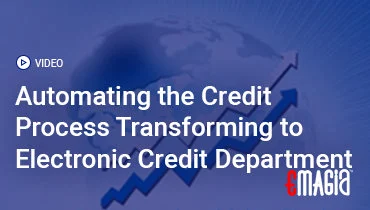In the world of business, a sale is not a sale until the money is in the bank. Accounts receivable collections, the process of pursuing payments for goods or services rendered, is therefore the final and most critical step in the revenue cycle. It is the bridge that connects sales to cash flow, and its efficiency directly impacts a company’s liquidity, profitability, and ability to grow. Many businesses, however, struggle with this fundamental function, facing challenges ranging from late-paying customers and manual processes to strained customer relationships. The question of **how to improve collections** is not merely an administrative one; it is a strategic challenge that, when solved, unlocks immense value for an organization.
Historically, collections was a tedious, reactive, and often confrontational process. Finance teams would spend countless hours on manual tasks like generating aging reports, making repetitive phone calls, and sending generic dunning letters. This approach was not only inefficient but also frequently resulted in a poor customer experience, jeopardizing long-term relationships. Today, the most successful companies are moving beyond this outdated model, leveraging technology, data, and a customer-centric mindset to transform collections from a reactive burden into a proactive, intelligent, and value-adding function.
Phase One: Laying the Groundwork for a Smarter Collections Strategy
Before you can optimize your collections process, you must first build a strong foundation. This involves getting the basics right, from your initial invoicing to the policies that govern your follow-up. Without these foundational elements, no amount of automation or advanced strategy will be fully effective.
Establish Crystal-Clear Credit and Payment Policies
The collections process begins long before an invoice is overdue. A strong credit and payment policy sets clear expectations from the outset. It should outline payment terms, due dates, accepted payment methods, and the consequences of late payment. By establishing these rules upfront and communicating them clearly to customers, you **reduce the likelihood of disputes** and payment delays down the line.
Master the Art of the Invoice and Communication
An invoice is more than just a bill; it is a crucial communication tool. An effective invoice must be accurate, complete, and easy to understand. It should include all necessary details such as the invoice number, due date, a detailed description of services, and clear payment instructions. Furthermore, proactive, polite communication—such as sending a courtesy reminder a few days before an invoice is due—can significantly **improve on-time payment rates** and prevent the need for more aggressive follow-up.
Offer a Variety of Seamless Payment Options
You can make it easier for your customers to pay by offering multiple convenient payment methods, from online portals and ACH transfers to credit cards. The fewer obstacles a customer faces, the more likely they are to pay promptly. A self-service portal, where customers can view their outstanding invoices, track payment history, and make payments with ease, is a powerful tool for **accelerating the payment cycle**.
Phase Two: Leveraging Data and Automation for Maximum Impact
In a modern collections environment, data and automation are the most powerful allies of the finance team. They enable a move away from a one-size-fits-all approach to a more segmented, intelligent, and proactive strategy.
Segment Your Customers and Prioritize Your Efforts
Not all customers are the same, and not all overdue invoices carry the same risk. By segmenting your customer base based on factors like payment history, credit score, and invoice value, you can prioritize your collections efforts. This ensures that your team focuses its limited resources on the accounts that have the highest value and the highest risk of non-payment, leading to a **dramatic increase in collection effectiveness**.
Implement Intelligent Dunning and Automated Reminders
One of the most impactful ways to improve collections is to automate the dunning process. Collections software can automatically send a series of personalized and professional reminders via email or SMS before and after an invoice’s due date. These automated workflows ensure that every account is followed up on consistently and on time, which is key to **reducing Days Sales Outstanding (DSO)** and minimizing bad debt.
Analyze Key Performance Indicators (KPIs)
You cannot improve what you cannot measure. A successful collections strategy relies on a clear understanding of its performance. Key metrics to track include:
- Days Sales Outstanding (DSO): The average number of days it takes to collect revenue after a sale. A lower DSO indicates a more efficient collections process.
- Collection Effectiveness Index (CEI): This metric measures how much of your total collectible receivables were actually collected within a specific period. A high CEI demonstrates a highly effective collections team.
- Average Days Delinquent (ADD): This tracks the average number of days that invoices are overdue, providing a clear signal of collections health.
Your Partner for a Frictionless Collections Process: How Emagia Helps
While many companies understand the theory of effective collections, putting it into practice with manual tools is nearly impossible. This is where an AI-powered solution like Emagia becomes a game-changer. Emagia provides an autonomous finance platform that transforms the collections function from a reactive burden into a strategic asset. The platform leverages advanced AI and automation to empower collections teams, helping them get paid faster while maintaining strong customer relationships.
Emagia’s solution goes beyond simple automation. Its **AI-powered predictive collections** engine analyzes historical payment data and other variables to forecast payment likelihood and intelligently prioritize collector worklists. This ensures that collectors are always focusing their efforts on the right accounts at the right time. The platform also automates **multi-channel dunning campaigns** (email, SMS, and even digital assistant calls) with personalized messaging that is dynamically adjusted based on real-time insights. By providing a centralized, data-driven approach, Emagia enables finance teams to **reduce delinquencies, accelerate cash flow, and improve operational efficiency** without the need for manual, time-consuming effort.
FAQs – The Future of B2B Collections
What is the difference between collections and accounts receivable?
Accounts receivable is the total amount of money owed to a company by its customers. Collections refers specifically to the process of pursuing payment for those accounts, particularly those that are overdue. Collections is a subset and a critical part of the overall accounts receivable management process.
How does a collections system improve customer relationships?
A modern collections system can improve customer relationships by ensuring that communication is consistent, professional, and not overly aggressive. By providing customers with self-service portals and a variety of easy payment options, it creates a frictionless and positive experience, reducing the need for awkward, manual follow-up calls.
What is the most important KPI for a collections team?
While many KPIs are important, Days Sales Outstanding (DSO) is often considered the most critical. It provides a quick and clear measure of the average time it takes to collect revenue, giving finance leaders a direct indication of the collections team’s efficiency and the health of the company’s cash flow.
How does AI help in the collections process?
AI helps in collections by providing predictive insights, automating routine tasks, and personalizing communication at scale. It can analyze payment history to predict which customers are likely to pay late, allowing collectors to prioritize their worklist. It can also automate the entire dunning process and even draft personalized messages, freeing up human collectors for more complex or strategic tasks.
Can a small business benefit from collections software?
Yes. Collections software is not just for large enterprises. For a small business, a single bad debt can have a disproportionately large impact on cash flow. By automating collections and providing a more systematic process, this software helps SMBs reduce risk, ensure timely payments, and compete more effectively in the market.



